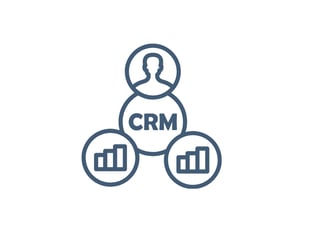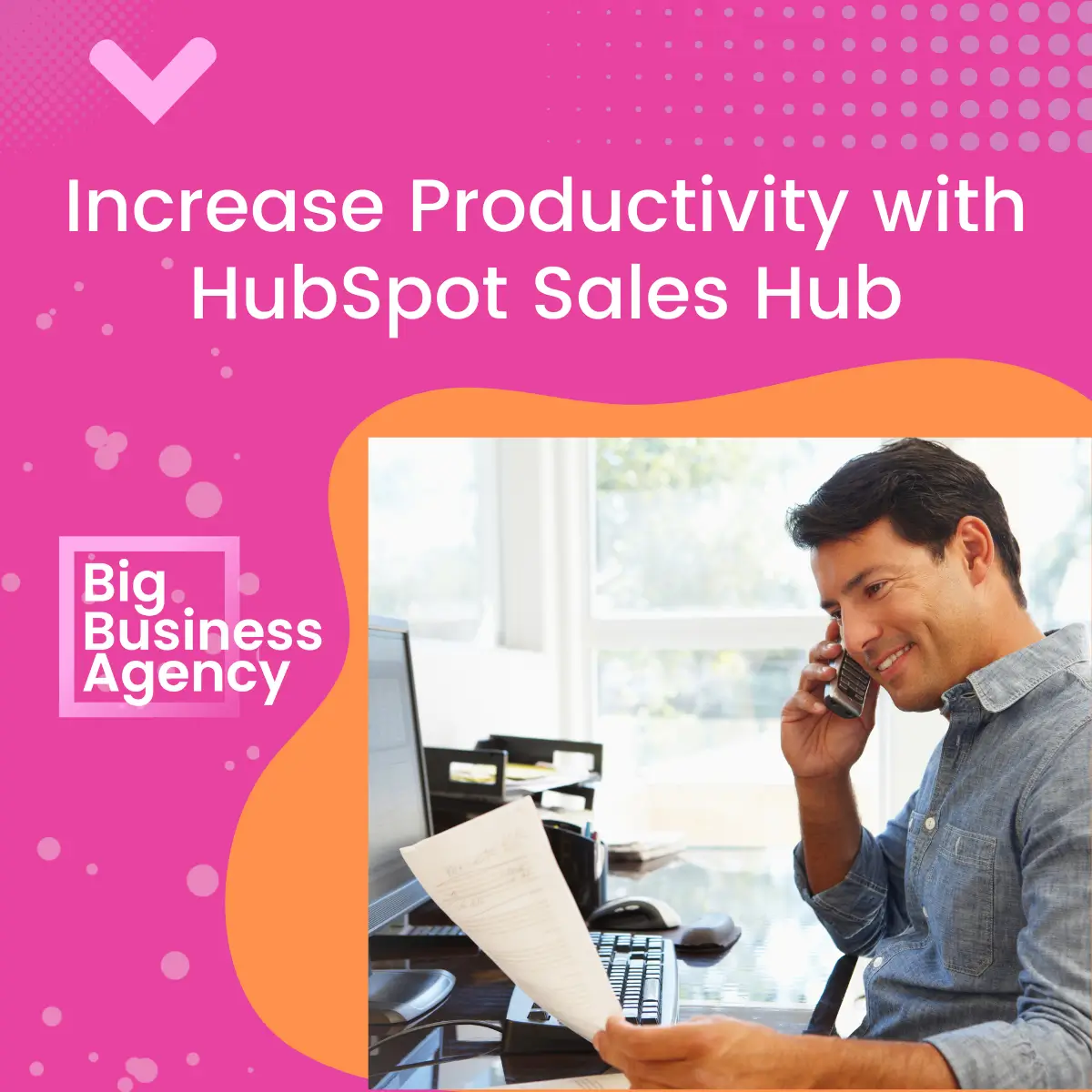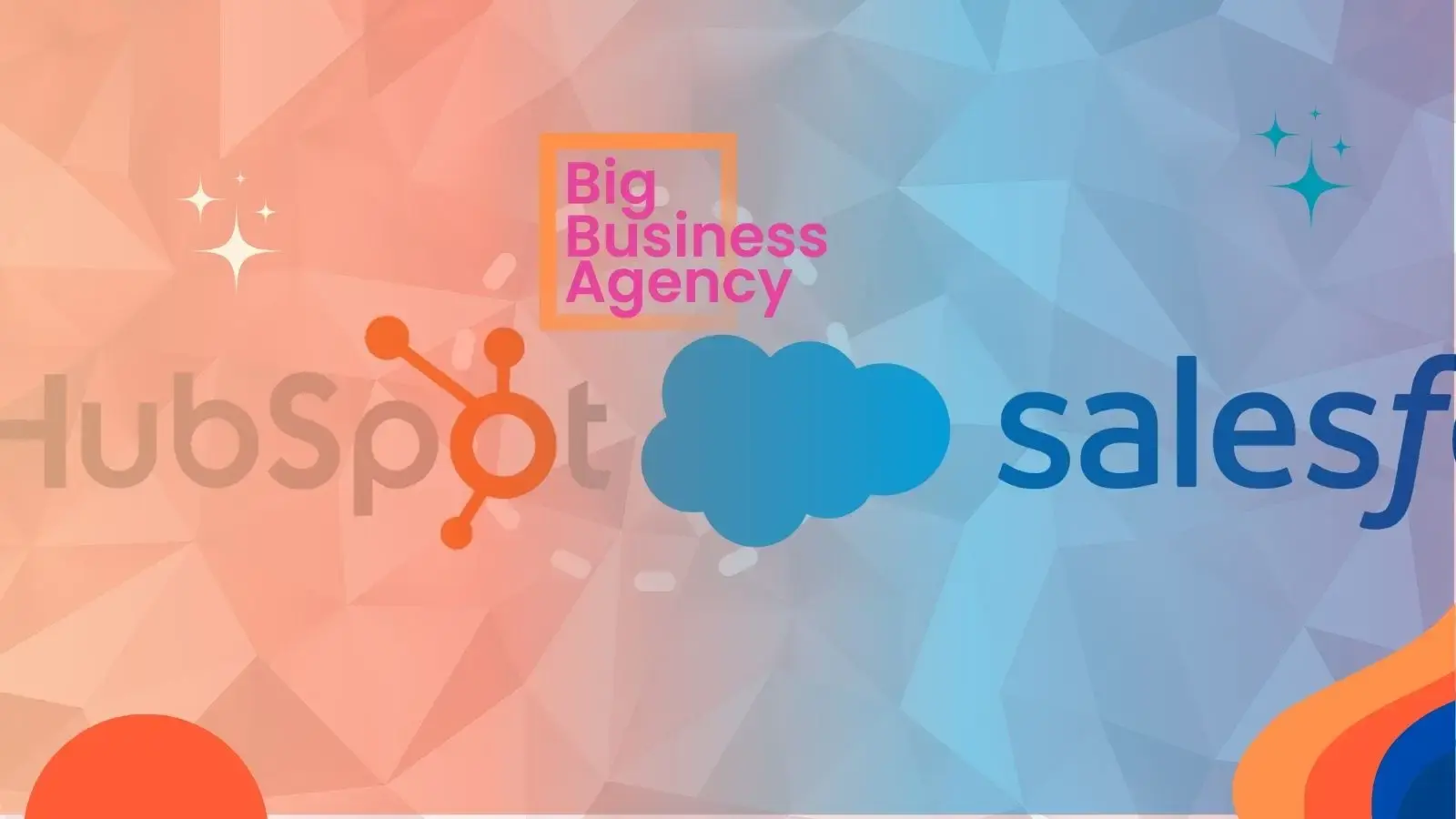How to increase sales productivity in your sales team
Every market report and CEO survey published right now states the same thing: businesses need to shift to increase productivity and reduce costs. ...

If you're thinking HubSpot is just another sales tool, you'd be wrong! 😮
It's easy to elevate your sales process with Sales Hub, powerful and easy-to-use sales software that includes sales engagement tools, configure-price-quote (CPQ) functionality, and robust sales analytics and reporting for growing teams
HubSpot Sales Hub comes with built-in features like AI powered content assistant and ChatSpot, sales templates, reusable text blocks (snippets), and calendar integration for meeting links, AI forecasting, calling, a dedicated prospecting workspace, plus A/B testing in your email sequences. Accelerate revenue growth is easier with new intelligent deal management tools like deal inspection and much more.
HubSpot’s new Leads tool is a game-changing addition in for sales teams available in Sales Hub 2.0. It allows teams to stay in ONE platform to accomplish all of their day to day tasks. Check out all the Sales Hub features and benefits here.
HubSpot outshines other tools like Outreach and Salesloft because reps can effortlessly view lead records within the Prospecting Workspace, without the hassle of navigating away.
It's a total win-win for companies that are already using HubSpot's CRM to manage their sales activities, thanks to the seamless data integration and user-friendly interface it offers.
Learning from mistakes made by the likes of Salesforce, HubSpot enables leads to be created as subset of a contact that operates similarly to a deal. This means unlike Salesforce, HubSpot can track a single journey through the sales funnel from lead to opportunity.
A contact can have multiple lead records associated with it as they convert, re-engage and reconvert and enter the funnel again. Enabling you to track reconversions more accurately than using lifecycle stage or lead status alone.
Clearly, using Sales Hub can help you reduce your technology costs, but you may be surprised to know costs can be reduced by 40-50% when you consolidate a bunch of sales solutions to just one.
Say goodbye to the need for multiple additional tools for your sales team! 👋
Sales Hub is built on the robust HubSpot Customer Platform. Almost everyone in the B2B world has heard about HubSpot CRM. And the reason for this is because HubSpot is one of the most popular and powerful CRM systems available due to its ease of use, but more importantly its automation and personalisation capabilities.
HubSpot is the ultimate go-to for all your marketing, sales, and customer support needs. With a powerful free CRM at its core, HubSpot Sales Hub is the perfect choice for companies looking to optimise their CRM capabilities and focus on sales.
Which brings us to the question:
Transitioning to a new CRM is a significant decision for any business. CRMs store vital information such as deal and contact records, and ensuring the security and integrity of this data is paramount. Consequently, extensive research is necessary to find a CRM with the right features and functions that your team can effectively utilise.
The reality is, nobody looks forward to managing this change so its important there's enough resources available to ensure the "switch" is successful. If you're going to make the switch, it's crucial to get it right from the start. If you're reading this, you're likely on the verge of signing up for HubSpot CRM but maybe still unsure if it's the best move for your business.
Let's delve into how you can determine whether switching to HubSpot CRM is the ideal choice for you and your team. But before that, let's cover CRM basics;
No matter how much research you conduct or how much money you invest, the truth remains that a CRM is useless if your team doesn't utilise it. This is the vital factor to consider when implementing a CRM for the first time or transitioning from one CRM to another.
The success of a CRM relies solely on its usage. As one of the most user friendly CRMs available, it's no surprise that HubSpot has an unprecedented high adoption and user rate.
It is common for organisations to experience complexity and attempt to customise the CRM when configuring their properties, causing them to increase the cost and delay launching of the tool trying to meet their idea of perfection.
These customisations can range from determining which properties to capture when manually creating contacts, to deciding on the number of sales pipelines needed and the stages to include in each pipeline.
 But here's the reality: the pursuit of perfection in CRM configuration is a never-ending journey. While you can certainly reach a very good and usable state with your CRM, you must also recognise that there will always be room for growth and improvement.
But here's the reality: the pursuit of perfection in CRM configuration is a never-ending journey. While you can certainly reach a very good and usable state with your CRM, you must also recognise that there will always be room for growth and improvement.
As you and your team begin using the CRM, feedback will naturally arise. Its important that you have someone who is responsible to listen and adapt to this feedback, ensuring that the CRM continues to meet the evolving needs of your organisation.
Of course all CRMs are just tools which ideally make your work easier to perform.
While HubSpot CRM may not be the perfect fit for every sales and marketing team, it does excel in many areas, not least its' flexibility and ease of use. We've witnessed numerous organisations switch to the HubSpot Customer Platform and they have found great success with it.
After working with so many of these organisations, we've identified the most common signs that indicate switching to HubSpot CRM is the right decision.
So, let's dive into these signs and explore why HubSpot CRM may be the solution you're looking for.
While customised CRMs are initially appealing, most companies simply cannot afford to stay updated and fall behind as their markets and customer needs rapidly evolve.
The frustration of waiting weeks for internal teams or external consultants to affect changes to keep the sales and marketing commercially relevant is unnecessary.
On the other hand, HubSpot CRM is regularly updated with new connectivity options, improved user interface and user experience, and enhanced tools. With more than 1000 app integrations supported by HubSpot, you can have peace of mind knowing that your CRM will never become obsolete.
As a sales leader it is of utmost importance to have a comprehensive understanding of your sales pipeline and be able to provide answers to key questions such as:
If it's questions and scenarios like these that you are interested in, then HubSpot CRM is the perfect solution for you.
HubSpot addresses these challenges directly through its customised reporting tools and sales & marketing dashboards.
While this may seem just like the previous point, it actually focuses on gaining a deeper understanding of your sales pipeline. When you evaluate your pipeline in its current state, are you able to gain valuable insights about your leads?
Instead of making assumptions about how people buy, it's important to listen to what your prospects and sales team have told you about the challenges they face. When we talk about actionable insights from the sales pipeline, we are referring to sales enablement.
 Salespeople are focused on selling, and it's safe to say that they always have numerous reasons why a lead is bad. If they are highlighting that the leads are subpar, it's likely that they are. So, does your CRM have a process in place to collect insights when these leads are rejected? This allows you to take action and obtain better quality leads.
Salespeople are focused on selling, and it's safe to say that they always have numerous reasons why a lead is bad. If they are highlighting that the leads are subpar, it's likely that they are. So, does your CRM have a process in place to collect insights when these leads are rejected? This allows you to take action and obtain better quality leads.
As you evaluate your sales pipeline, these are some of the crucial questions you should be asking. If you find that you can't answer some of these questions, but you want to, it may be time to consider switching to HubSpot.
HubSpot's custom reporting and dashboard tools can directly address this pain point and provide the insights you need. Check out HubSpot's Sales & Marketing Dashboards to discover more.
Understanding the behaviour of our website visitors is often the main reason why many of us choose to use HubSpot. This applies not only to your marketing team, but also to your sales team. It is crucial for them to be able to answer questions like:
Not only does this help your sales team gain a better understanding of our prospects, but it also allows them to provide insights on how the sales process can be improved on our website.
Imagine if you knew that all your prospects had to do was read 20 pages of your website or watch 6 videos, and your sales team would close deals 70% of the time. The impact of a 70% close rate on your business would be tremendous.
With HubSpot CRM's cookie tracking feature, you can have granular access to all the information mentioned above and more. However, it is likely that you are lacking this valuable data for various reasons, one of them being...
If your marketing team is using one CRM and your sales team is using another, it's time to consider consolidating.
We often come across teams that use HubSpot Marketing Hub and its accompanying CRM to gather website visitor data, only to find that the sales team keeps their deal information in a separate system like Salesforce. This not only creates extra work, but it also keeps sales and marketing isolated from each other, with no visibility into a contact's behaviour or activity in the other team's funnel.
Why isn't your sales team taking advantage of the valuable lead intelligence that your marketing team has worked so hard to gather?
By using a single CRM where both sales and marketing teams can document and view activity, you can gain greater insight into your contacts' behaviour and overall experience with your brand.
Using two separate CRMs also opens the door to one of the most common reasons why organisations switch to HubSpot CRM.
If you're still managing your deals in your inbox or an Excel sheet, it's highly likely that you're experiencing the frustrations mentioned earlier. However, you've probably also found yourself thinking through some of these questions:
As the list of questions goes on, they get harder and then near impossible to answer without a CRM.
When your sales team has answers to questions like these, they go from being intrusive to helpful.
Salespeople who operate in a vacuum and have no clue what their prospects are thinking or doing aren’t very helpful. With HubSpot CRMs activity log and quick task follow ups, these problems are a thing of the past.
This is a common problem that many people can relate to, as it encompasses several issues already discussed. Integration problems, using separate CRMs, lacking visibility into the sales pipeline, and not having a sales pipeline at all can all contribute to this issue.
Marketers success is often measured by their ability to drive traffic, generate leads, and support sales. However, if the deals closed aren't being tracked in HubSpot and we can't determine which web pages, emails, or collateral directly influenced a sale, we are left in the dark about what our prospects truly find valuable.
By connecting the dots between closed sales and marketing efforts, teams can become a profit-centre rather than just a cost-centre. The HubSpot CRM provides a solution by consolidating all of this information in one place, allowing us to gain valuable insights and make data-driven decisions.
Check out our Ad Intent Data solution that provides the missing link for sales teams, giving detailed reports on which of your ads are performing well (enabling you to easily scale top performers) and detailed data on the source of your leads, including engagement with which ad, the time and date and name of prospect.
Adequate training is essential for CRM success. Without adequate onboarding, expecting your team to learn a new system is a recipe for failure. It's no wonder that one-third of CRM projects fail.
 Choosing the right CRM platform is crucial. Legacy CRMs like Salesforce often have outdated user interfaces that make them difficult to use. Don't set yourself up for failure by selecting a CRM with outdated technology.
Choosing the right CRM platform is crucial. Legacy CRMs like Salesforce often have outdated user interfaces that make them difficult to use. Don't set yourself up for failure by selecting a CRM with outdated technology.
Unfortunately many companies end up spending more on the service cost of administering the platform than they do on the software itself. Instead, choose a vendor that offers a modern, user-friendly interface that works well on both desktop and mobile devices.
Look for a CRM that provides comprehensive onboarding and ongoing support to maximise your CRM systems potential.
To truly get the most out of your CRM, you need to inspire employee buy-in. Get creative with your enablement strategies, such as running competitions, offering a mix of on-demand training and scheduled sessions, and presenting real business scenarios. These approaches help users become comfortable with using the platform themselves.
Additionally, it's important to anticipate potential roadblocks and have a decision-maker in place who can address questions and troubleshoot issues. These steps will help ensure that your employees fully embrace the CRM platform.
Integration issues come in a few forms including ERP integration for CPQ, hitting your API call limits and property mapping errors.
These issues may not be overly complicated to resolve, but it does require a certain level of expertise and time to effectively address them.
However, if your CRM is not bound by industry regulations, switching to HubSpot CRM can completely alleviate these integration issues. HubSpot's Smart CRM is seamlessly linked to HubSpot marketing platform, eliminating the need for any additional integrations. Deeper integrations, such as integrating HubSpot with your ERP is now a reality, meaning much better workflows, reporting and even CPQ should you need it.
We equip ourselves with tools to simplify our lives. Everyone does. But when we find ourselves juggling different tools for scheduling meetings, video conferencing, and managing email templates, it's natural to feel a sense of disarray and frustration.
These tools are meant to streamline your sales process and save your team time, not complicate matters.
Your CRM should seamlessly integrate all these applications, allowing your sales team to effortlessly complete tasks in one place without switching tabs.
If any of these 10 signs resonate with you, we encourage you to explore the HubSpot Customer Platform
The best part? HubSpot's Smart CRM is completely free, go ahead and take it for a spin whenever you like. You can upgrade to unlock new features as your business grows.
Explore the full potential of HubSpot and unleash its capabilities to boost your sales growth. It seamlessly integrates with Service Hub and Marketing Hub so HubSpot can provide a single customer platform for your customer focussed teams.
Want to discover more? Why not join us at SpokeSpeak? - a Sales and HubSpot focussed community that's open to HubSpot enthusiasts, experts and newbies as well as those of you that are simply Hub-curious 🤔
Check out the next episode at SpokeSpeak.com
why you should align your sales process with the buyer's journey
simplify your sales tech stack

Every market report and CEO survey published right now states the same thing: businesses need to shift to increase productivity and reduce costs. ...

HubSpot and Salesforce are like the dynamic duo of sales and marketing CRMs.

Why consider HubSpot? Why on earth should you even consider the HubSpot customer Platform for your business? CRMs frustrate salespeople. For those of...